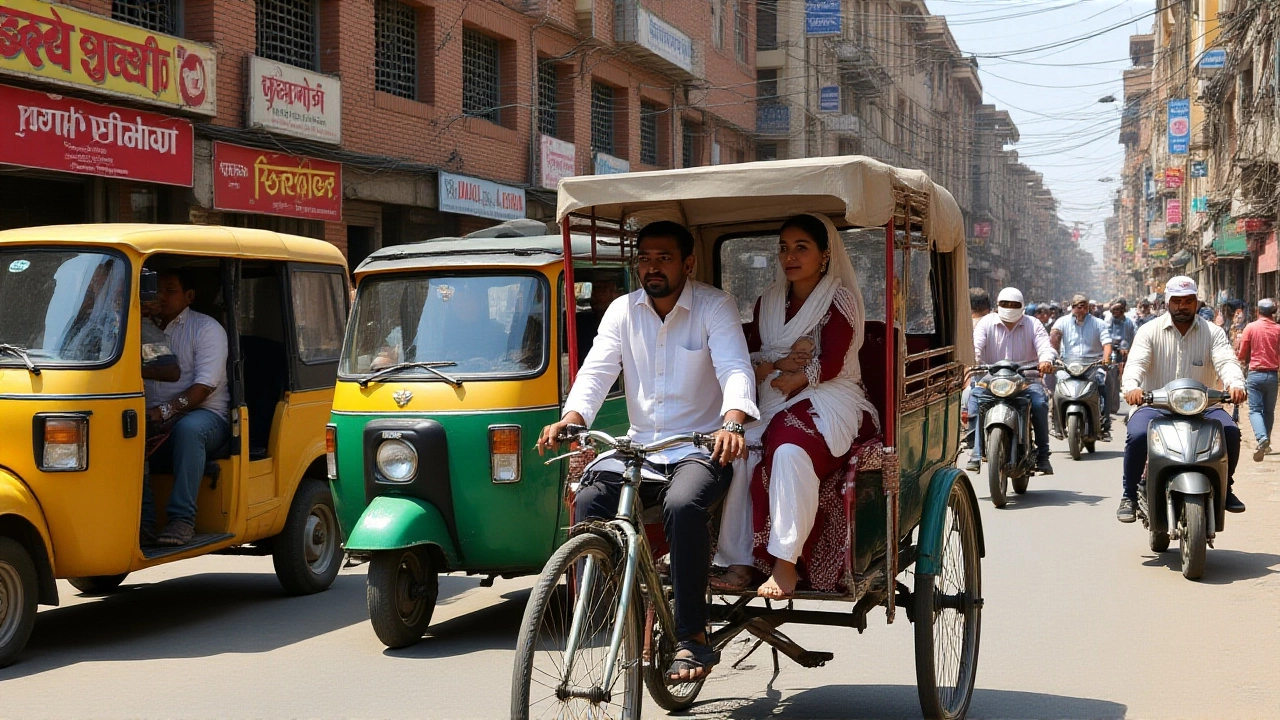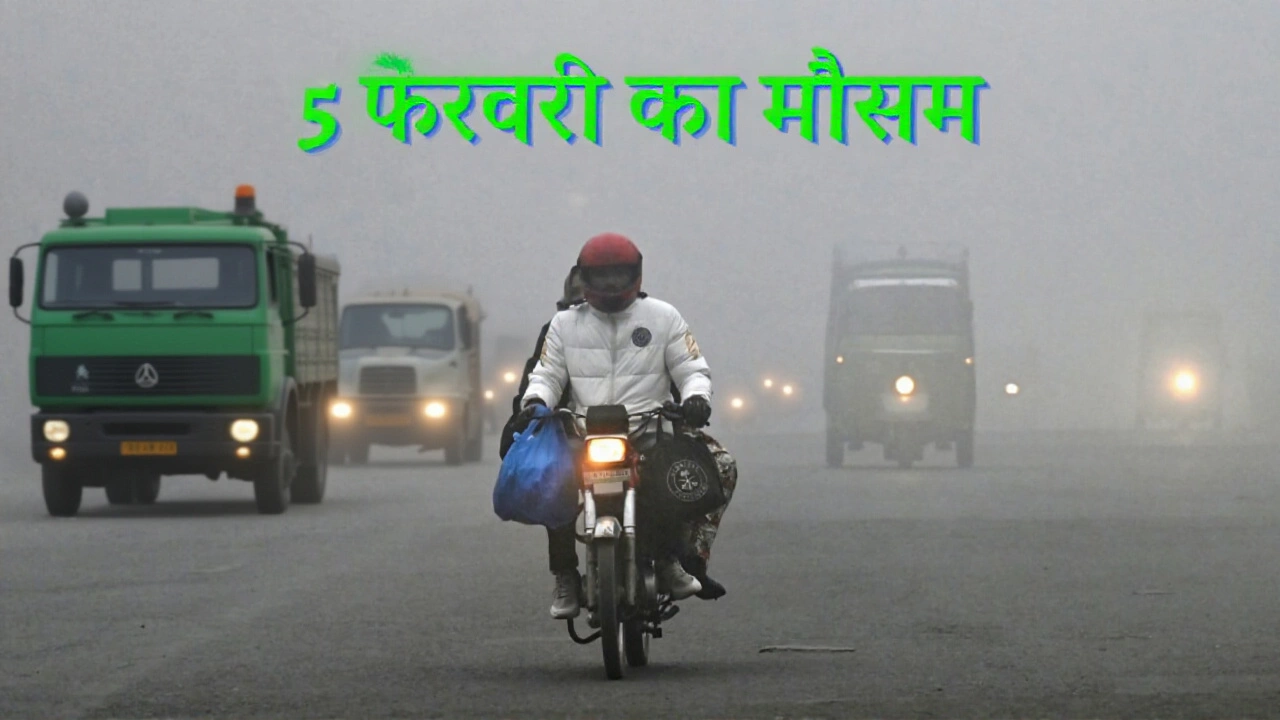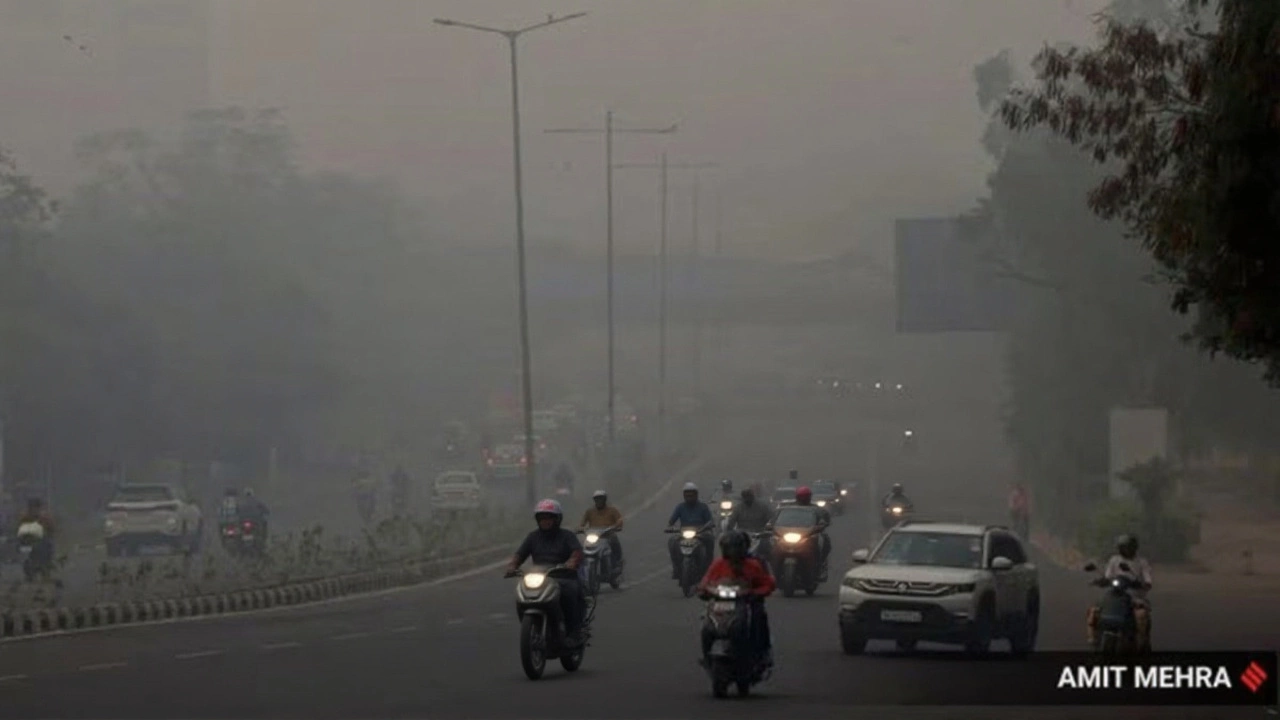On the morning of November 28, 2024, Delhi’s air quality hit alarm‑level numbers, with seven monitoring stations reporting an Air Quality Index (AQI) above 400, well into the "Severe" bracket. The surge sparked an urgent briefing by the India Meteorological Department (IMD), where officials warned residents to brace for more than a week of choking smog.
Background: Why Delhi’s Air Often Turns Toxic
Delhi’s geography makes it a natural bowl – the Himalayas to the north and the Aravalli range to the south trap pollutants. Every winter, the city grapples with a cocktail of vehicle exhaust, construction dust, and, most conspicuously, crop‑residue burning in neighboring states. Historically, the capital has logged over 200 days in the "Very Poor" or worse category since 2017.
Current Pollution Levels (Nov 28, 2024)
During the 11:30 AM weather briefing at the IMD headquarters, Mr. Mritunjay Mohapatra, Director General of India Meteorological Department highlighted three hotspots:
- Anand Vihar (East Delhi) – AQI 451 at 9:45 AM
- Mundka (West Delhi) – AQI 432 at 10:15 AM
- Punjabi Bagh (West Delhi) – AQI 415 at 10:00 AM
All three sit in the "Severe" range (401‑500). In total, seven of the 38 Continuous Ambient Air Quality Monitoring Stations (CAAQMS) posted readings above 400, including Jahangirpuri (407) and Wazirpur (403). The city‑wide PM2.5 level hit 320 µg/m³, a staggering 2,033 % over the World Health Organization’s 24‑hour safe limit of 15 µg/m³.
Causes & Contributing Factors
Dr. Gufran Beig, director of the System of Air Quality and Weather Forecasting And Research (SAFAR), explained that the spike was driven by three main forces:
- Crop residue burning – Satellite data from NASA’s FIRMS recorded 1,247 active fire spots in Punjab on November 27.
- Stagnant weather – Surface wind speeds lingered below 5 km/h, and a temperature inversion perched at about 100 m, preventing vertical mixing.
- Urban emissions – The Ministry of Earth Sciences estimated diesel trucks contributed 41 % of the PM2.5 load, with industry and construction adding another 39 % combined.
"The current AQI levels are 30‑40 % higher than the five‑year average for this time of year," Dr. Beig said at a joint press conference held at the IMD Mausam Bhavan on Lodi Road.

Government Response: GRAP Stage IV Measures
The Graded Response Action Plan (GRAP) entered Stage IV on the evening of November 25, sealing the city with a suite of restrictions:
- Complete ban on diesel trucks, except for essential goods.
- Closure of brick kilns and stone crushers across the NCR.
- Mandatory work‑from‑home for 30 % of government employees.
Enforcement fell to the Delhi Pollution Control Committee (DPCC). Ms. Kanchan Pande, Enforcement Director of Delhi Pollution Control Committee reported 147 fines totalling ₹1,470,000 issued on November 27 for breaches of anti‑dust regulations.
Meanwhile, the Central Pollution Control Board (CPCB) chaired by Shri Prakash Javadekar released an emergency order (CAQM/EMERG/11/28) that will stay in place until the AQI dips below 300 for 48 consecutive hours.
Health Impact: Hospitals See Surge in Respiratory Cases
The Indian Council of Medical Research (ICMR) issued Health Advisory No. ICMR/2024/11/28 at 9:00 AM, warning of a 15‑20 % rise in hospital admissions for breathing problems. Safdarjung Hospital logged 287 acute asthma cases on November 27, compared with its usual daily average of 185.
Dr. Gufran Beig emphasized that vulnerable groups – children, the elderly, and those with pre‑existing heart conditions – face the highest risk. "We’re seeing more people reporting chest tightness and eye irritation," he noted.

Forecast & Outlook: How Long Will the Smog Linger?
IMD’s 24‑hour forecast, issued at 8:00 AM, predicts "Severe" air quality persisting until at least November 30, given the continued low wind speeds and lack of a clearing western disturbance. The residual moisture from Cyclone Fengal, which made landfall in Tamil Nadu on November 27, is also hampering the usual post‑monsoon cleansing breeze.
If wind speeds drop below 2 km/h, SAFAR’s model warns the AQI could climb to 480 – a figure last seen during the November 2019 crisis that forced schools to shut for nine days.
Historical Comparison: 2023 vs 2024
Last November, Delhi endured 17 days with AQI above 400, peaking at 498 on the 5th at Anand Vihar. So far in 2024, the capital has logged 14 such days, a modest improvement but still far from acceptable.
"We have learned a lot about the timing of crop‑burning bans," said Mr. Shailesh K. Panda, Senior Scientist at IMD, "but the meteorological factors this year are exceptionally unforgiving."
Frequently Asked Questions
What is driving the current AQI spike in Delhi?
The main drivers are extensive crop‑residue burning in Punjab, unusually calm wind conditions that trap pollutants, and high emissions from diesel trucks and construction sites. Satellite data showed over 1,200 active fire spots on November 27, while wind speeds remained under 5 km/h.
How are authorities responding to the severe smog?
The government has activated GRAP Stage IV, banning diesel trucks (except essential goods), shutting brick kilns, and mandating work‑from‑home for 30 % of government staff. Fine enforcement is being carried out by the DPCC, and the CPCB has issued an emergency order that stays until AQI stays below 300 for two full days.
What health risks does this level of pollution pose?
PM2.5 concentrations of 320 µg/m³ are over 2,000 % above WHO limits, increasing the risk of asthma attacks, heart attacks, and premature deaths. Hospitals in Delhi have already reported a 15‑20 % rise in respiratory admissions, with especially vulnerable groups being children and the elderly.
When can residents expect the air to clear?
Forecasts suggest the bad air will linger until at least November 30, unless a strong westerly disturbance arrives early December. If wind speeds stay below 2 km/h, AQI could rise further, extending the crisis into the first week of December.
How does the 2024 situation compare with previous years?
In November 2023 Delhi recorded 17 "Severe" days, peaking at an AQI of 498. So far in 2024 there have been 14 such days, slightly better but still well above safe thresholds. The pattern underscores the recurring nature of winter smog, driven by similar agricultural and urban factors each year.






